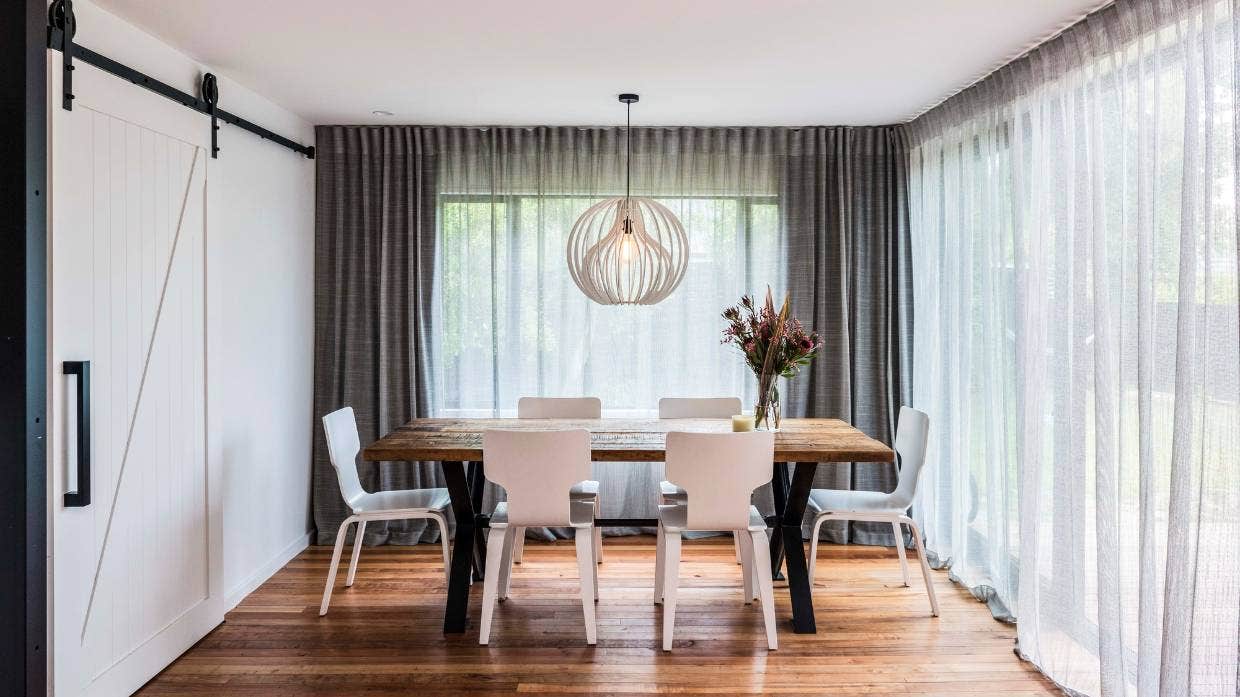The one golden design rule you should never break when choosing curtains

I have a summer ritual: every day at about 3pm, I nip into the living room to shut the curtains on the best of the day, before the sun hits the French doors. If I forget, when I head down there after work I will be greeted by an inferno. Great for the dog, who I’ll usually find sacked out in the hottest spot, not so great for me trying to watch the news in comfort.
Window treatments do more than add an elegant swoop of velvet or linen to your decor – they’re about light, noise and heat control too. “You can definitely close out the world with a curtain,” says Wellington interior designer Amanda Holland of Small Acorns. She has one over-arching drapery rule: curtains should go all the way to the ground. If you can’t achieve that, or you need the wall space beneath a window for furniture, opt for blinds instead.
In cooler weather, floor length curtains have a practical value, beyond pure aesthetics. According to a 2019 Consumer NZ test, curtains that went all the way to the floor were better at insulating the room.
The best treatment for insulation, however, was a Honeycomb blind. Consumer NZ found these concertina pockets retained more heat than any other kind of window treatment - nearly 60 per cent more than is lost through an uncovered window.
"From our testing honeycomb blinds came out miles above what even the best curtains could offer in terms of insulation,” says Consumer NZ researcher James le Page. Like a puffer jacket for your window, that trapped pocket of air becomes a great insulator, keeping heat in – and potentially keeping it out, too.
If you’re still set on curtains, go for multiple drops, says le Page. That creates pocket of air between fabric that will insulate the room. If practical, fit the curtains as close to the window pane as possible, and have them long enough to “almost puddle a little bit” on the floor, as this stops air moving under the hem and taking heat with it.
Auckland designer Anna Cuthbert of Cuthbert Interiors agrees a puddled curtain is best. Battling the sun 24/7, fabric curtains can shrink a little over time, so it pays to give them some room to move. "Curtains are versatile. They can be done in conjunction with blinds, or with sheer curtains behind, if there is a nosy neighbour next door."
For a family room, lined curtains and sheers can be on different tracks, so the sheers can be pulled during the day for privacy, or to soften the light, and the thermal/acoustic drapes pulled in the evening.
Curtains usually take more fabric than blinds, though can be cheaper to make – so you’ll need to weigh up costs. "Curtains aren't terribly expensive to have made. The fabric is your costly element,” Cuthbert says. “That can range from $30 a metre, up to $3000 a metre, depending on your budget and whether you're buying New Zealand stock, or an international product.”
Holland says there are lots of options to get the finish you want. "You can line them so that they can be cosy, you can line them so that they can be darker. “Roman blinds – blinds in general – will still let in a little light, even though you might choose a blackout lining, just because they're not as generous over the sill.”
When it comes to choosing fabric, Kiwis need to remember how tough our sun can be on soft furnishings. "People see some fabrics in European or British magazines, and they would love that in their window here,” says Holland. “We just have to be upfront and say, ‘I personally wouldn't put that in a window in New Zealand because our sun is the worst in the world’.
“Unless you have got your windows treated, all fabrics are up for a bit of damage from sun. It's unavoidable.” Linen curtains are popular "because they can be beautiful and shear and floaty, or you can line them so that you still get your privacy".
People are also spending a little more to get a more luxe look with fabric like velvet. In terms of choosing colour or pattern, Holland says it very much depends on your style. In a bedroom, if you change up the pattern on your duvet covers regularly, a plain curtain is less likely to clash. If your sofa and cushions are plain, a pattern might be good at the windows.
